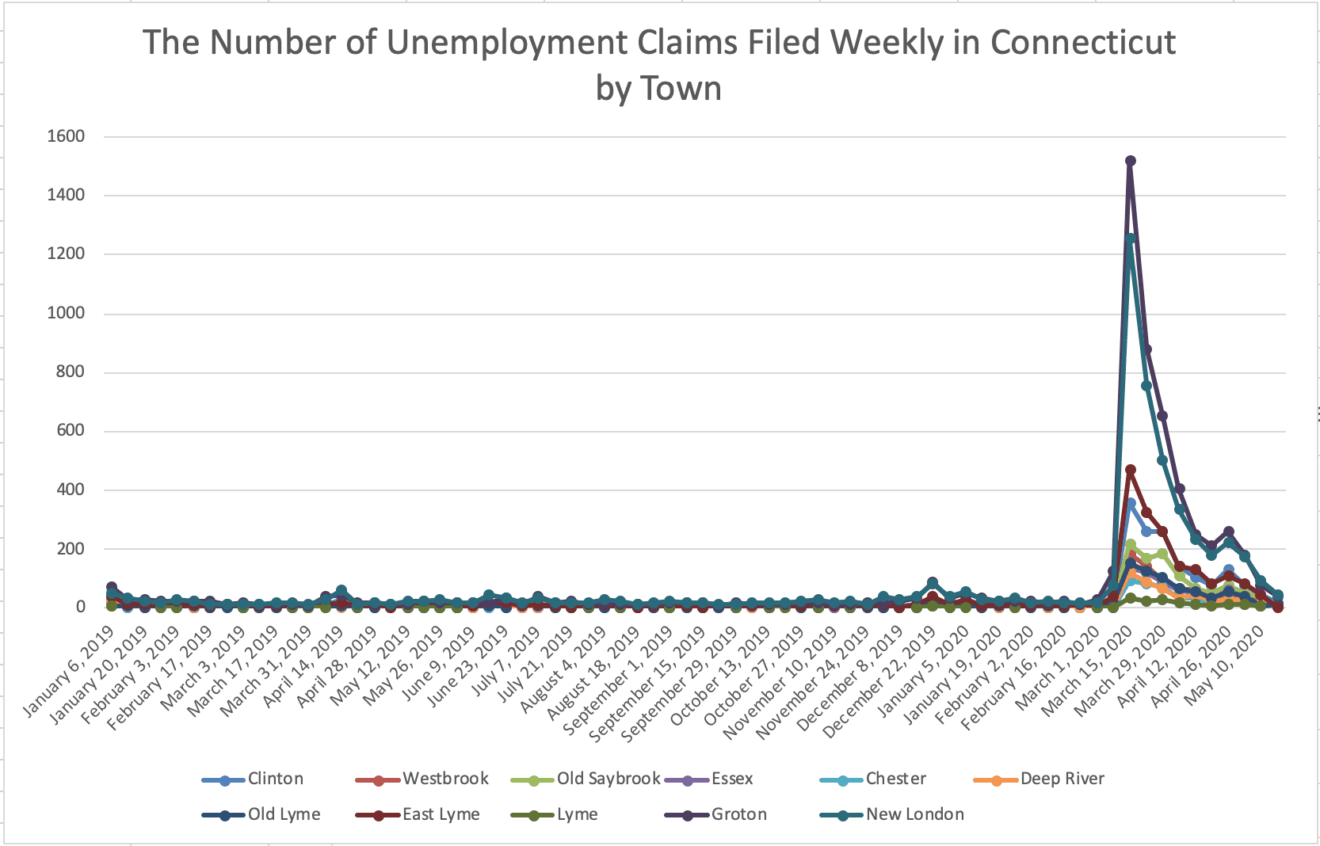In a typical week unemployment claims statewide for Connecticut sit at about 2,000. In the second week of March that number tripled. In the third week, new claims reached an all-time high of 78,304.
But these claims also reflect complex economies and the disparate impacts of efforts to the slow the spread of COVID-19 as they are felt across categories of age, gender, education, industry and location.

Those in the beginning of their career, between 20 and 29, have been hit the hardest by layoffs and furloughs across the state. Typically, an equal proportion of claims are filed by those in their 20s, 30s, 40s and 50s each week. However, the third week of March saw 21,671 claims from individuals age 20 to 29, more than 25 percent of the total number of claims filed.

Throughout the COVID-19 pandemic women have consistently filed more claims than men, even though typically men and women file equal numbers of claims. In the third week of March, women filed nearly double the number of claims that men did: 49,953 compared with 28,337.

Layoffs have impacted those without a college or graduate degree far more than those with advanced education. Individuals with just a high school degree or some college made up more than 53 percent of those filing for unemployment during the third week of March.

As expected, the accommodations and food service industry was hit the hardest with one-third of claims in the third week of March. Healthcare and social services, retail and the self-employed also suffered substantial losses compared to information, manufacturing and public administration.
The Connecticut Department of Labor will continue to update their data weekly throughout the state of emergency.
“With so many unemployment claims related to the COVID-19 virus, it is especially important for government to use every piece of information to make wise decisions that help our citizens and the state’s economy. As we look at ways to get people back to work in a safe and responsible manner, this data can play an important role in analyzing trends and making future decisions,” said State Labor Commissioner Kurt Westby.

